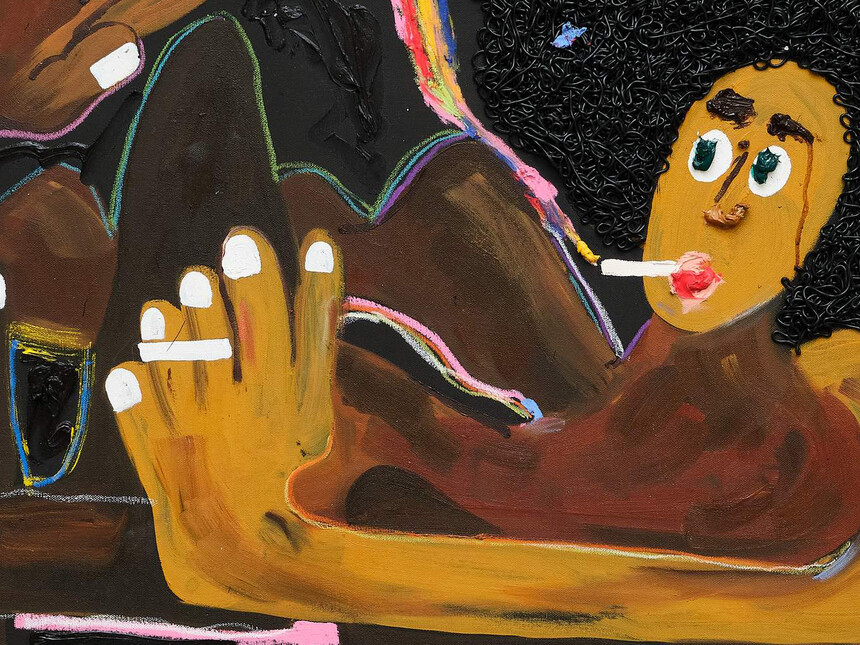
15 Nov Scenes for Josephine
Source Credit: Content and images from Wall Street International Magazine by . Read the original article - https://www.meer.com/en/85204-scenes-for-josephine

The Pit is proud to present Scenes for Josephine, the second solo exhibition of Los Angeles-based artist Devin Troy Strother with the gallery. The exhibition will be on view from November 16 – December 21, 2024 with an opening reception on Saturday November 16 from 6-8pm during which a series of performances will be held. This exhibition is the culmination of a year of performances Strother has held throughout the city of Los Angeles that will be restaged at The Pit. Additional performances will be held throughout the duration of the exhibition with times and dates forthcoming.
When I began planning this show around this time last year, it was initially titled *A mid-career show”. Midway through its development, on June 26th, my mother, Josephine Strother, passed away. After her death, the show’s focus shifted from an exploration of my artistic practice to a deeper exploration of existence itself. As cliché as that may sound, that’s essentially what happened—an attempt to examine one’s own decisions and positions in real time, while creating work that responds to those very self-critiques. Below is the revised title and press release.
Scenes for Josephine is a series of performances and artworks that delve into Devin Troy Strother’s memories—a self-reflection and critique on one’s career trajectory during a life transition. This collection of works explores the artist’s evolving ideals on status and position, while navigating the complexities of a “mid-career” chapter in the artist’s life.
The new title, Scenes for Josephine, reflects Strother’s lifelong connection to storytelling and visual narratives. Growing up in Los Angeles, where film and television are deeply embedded in the culture, he and his family spent countless hours watching home movies and Hollywood films—moments that profoundly shaped his creative world. His mother, Josephine, deeply loved photography, capturing their life on camera. In doing so she began to create a constant visual archive that celebrated their identity while also serving as a reservoir of memories and images. These images have remained with Strother and influenced his work, as he frequently references them. His father, a union set worker in Hollywood on various productions, gave him an intimate understanding of the realities of the people behind filmmaking.
These experiences fostered a shared language of cinematic references and an enduring bond over imagery that permeates Scenes for Josephine. Through this show, Strother sheds light on the rarely discussed nuances of career progression, capturing the elegance and challenges of a 15-year journey in art. While painting might be his most recognized medium, video and installation have been a core part of the artist’s practice since the beginning, allowing him multitudes of pathways to explore the narratives of artistic identity. In Scenes for Josephine Strother focuses his practice on performance alongside painting, using his body as a medium to break away from the confines of canvas and materials. Included in the exhibition are four structures, three of which will be activated through performances including new iterations of The Longest Cornrow and Painting Aquarium both referencing works by titans of performance art Janine Antoni and Paul McCarthy respectively – The Longest Cornrow a reimagining of Antoni’s Loving care, 1992 coupled with Moor, 2001 and Painting Aquarium a reflection of the dark satire of McCarthy’s video work Painter, 1995. Another structure titled 3017 Glenhurst St, pays homage to Garage Renovation New York (Cherry Makita), 1993 an early work currently on view at Hauser & Wirth, Los Angeles by Jason Rhoades, an artist that has long influenced Strother’s aesthetic.
In Strother’s 3017 Glenhurst St, he recreates the first studio he ever had, a studio in his childhood home garage, expressing his gratitude for the support his parents gave him in his early career. Rhoades’s influence is also apparent in the installation of neon’s suspended from the ceiling writing out names of famed celebrity artists and actors which visually addresses the entanglement of entertainment and fine art in today’s market. In the last structure Kiosk, the artist displays and sells bootleg copies of favorite movie scripts – an act of resistance echoing the sale of political zines by a leftist political art group at the Museo Nacional Centro de Arte Reina Sofía. The structure and performance share this act of political resistance by democratizing a pillar of entertainment capitalism while simultaneously spreading the personal joy of film that enveloped the artist’s upbringing. The paintings in the show are self-referential, showing scenes from favorite films and a glimpse into the artist’s studio. The push and pull of the paintings and installations highlighting the struggle of pushing forward in one’s career, one’s life. Together, this show offers audiences a unique perspective on the intersections of personal history, family heritage, and the growth of an art career in the shadow of Los Angeles’s cinematic landscape.
Source Credit: Content and images from Wall Street International Magazine by . Read the original article - https://www.meer.com/en/85204-scenes-for-josephine

